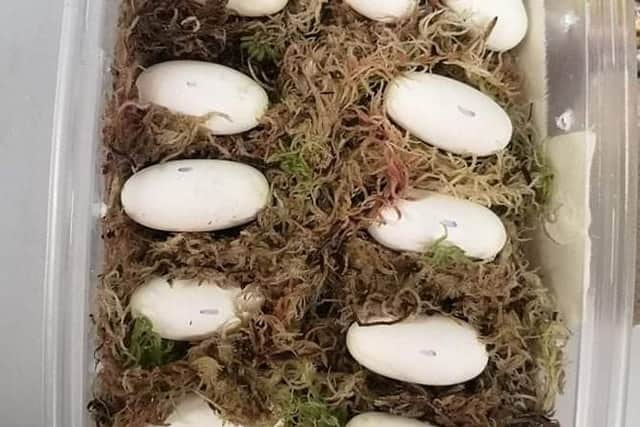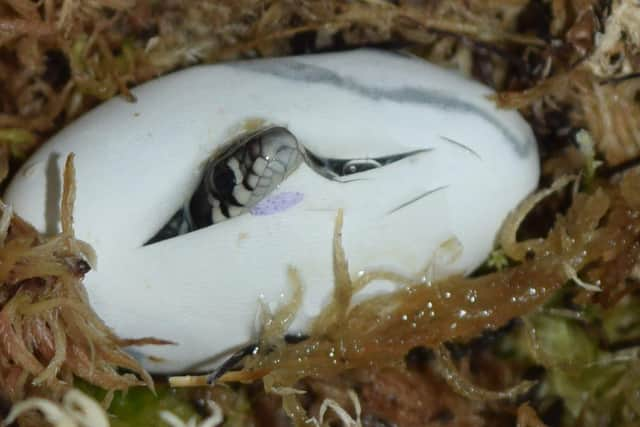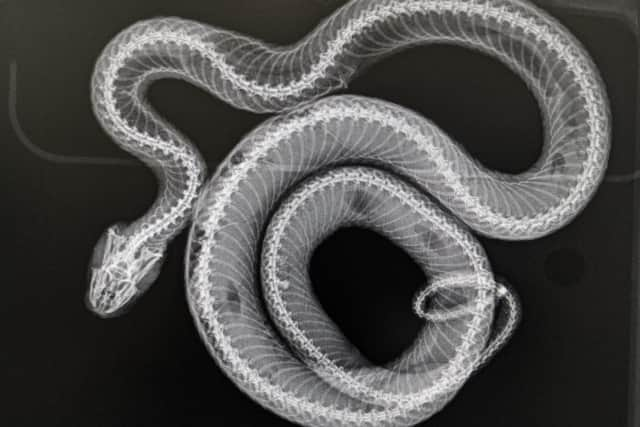Rescuers help baby grass snakes hatch after injured mother found near Hastings
and live on Freeview channel 276
RSPCA staff at Mallydams Wood Wildlife Centre took care of 13 snake eggs.
A female grass snake was discovered by a member of the public in Three Oaks who was concerned for her welfare due to injuries to her scales.
Advertisement
Hide AdAdvertisement
Hide AdVet Jo Mihr said: “She was very lethargic, thin, had a broken rib and small wounds to her face and body. When we were assessing her I thought I could feel eggs inside so we x-rayed her and spotted 13 eggs.


“The following day she laid her clutch but this left her even weaker and she deteriorated over the coming days.
“We took her eggs away shortly after they were laid; grass snakes will normally lay somewhere warm like a compost heap and don’t look after the eggs afterwards so we tried to replicate that and ensure the best outcome for the eggs.
“Sadly, despite our best efforts to help the female, she wasn’t improving so we made the difficult decision to put her to sleep.
Advertisement
Hide AdAdvertisement
Hide Ad“We were really sad that she hadn’t made it. Laying her clutch must have drained her of what little remaining energy she had left. But we still had the unhatched eggs and we knew the babies still stood a chance.”


Staff had the tricky job of trying to create a suitable environment to nurture and warm the eggs so they would hatch. Vet Jo oversaw their care for eight weeks until they started to hatch.
Jo added: “We put the eggs into a moss substrate on an adjustable heat pad to keep their environment humid and warm. We monitored the temperature closely and kept it between 23C and 26C.”
The first egg hatched after 56 days and 11 more followed over the coming week, leaving one thatremained unhatched.
Advertisement
Hide AdAdvertisement
Hide AdStaff checked the 12 hatchlings - or snakelets - and they were given clean bills of health and were released on Monday (September 13) at a special site near Bexhill.


“One of our wildlife assistants carries out reptile surveys at the site and we knew it was a great habitat for them and would give them the best chance at survival,” Jo added.
The grass snake - or Natrix helvetica - is widespread in England and Wales, and they can often be seen in gardens. They are usually an olive green colour with large eyes and round pupils and can grow to be over 1m long. They are the only native species that lays eggs.